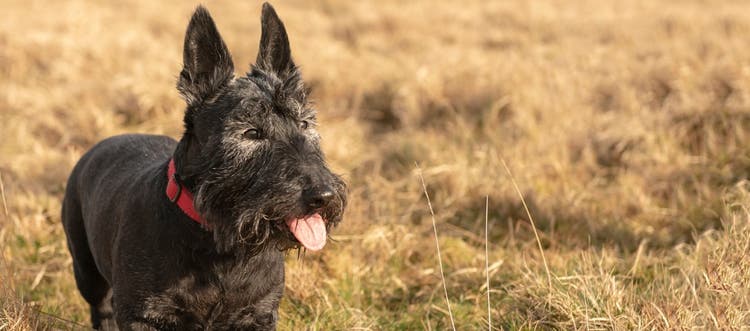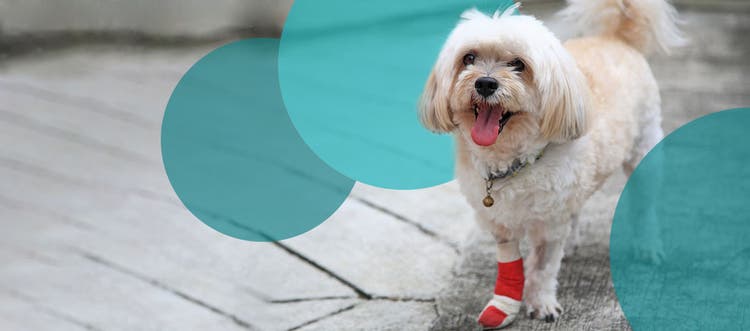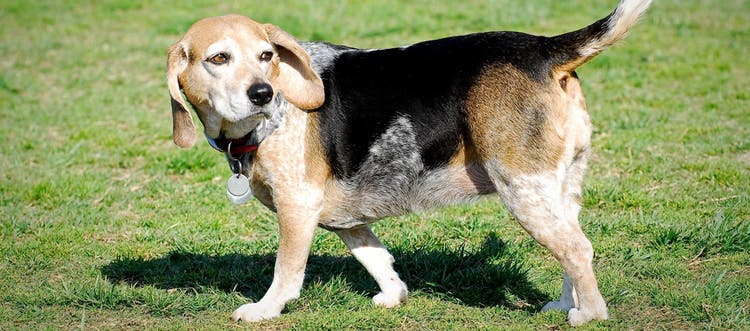Tips for dogs with arthritis
When a dog suffers from osteoarthritis (commonly referred to simply as "arthritis"), everyday activities can become a challenge. Whether your dog is slow to get up in the morning or less willing to jump up onto the couch for snuggles, joint pain and discomfort can affect their ability to get around.
Osteoarthritis is a progressive disease and gradually gets worse over time. Fortunately, there are many ways to help control your dog’s pain and make them feel more comfortable. Your veterinarian may recommend arthritis management strategies such as:
- Non-steroidal anti-inflammatory drugs (NSAIDs)
- Appropriate exercise
- Weight management
- Prescription joint diets or supplements
There are also steps you can take at home to help a dog with arthritis.
How to Help a Dog with Arthritis at Home: 5 Simple Changes
Dogs with osteoarthritis have to overcome many obstacles at home, from slippery floors to daunting flights of stairs. If your dog is moving slower than usual or having trouble navigating the house, consider implementing these five simple changes.
1. Use Pet Gates and Ramps
Dogs with joint pain may hesitate, make failed attempts or outright refuse to climb stairs. Removing stairs from inside our homes is usually not an option, but we can reduce the number of times our dogs go up and down them. Some adjustments to try include:
- Blocking off stairways with pet or baby gates so your dog can't get to them without your help
- Using pet ramps to make it easier for your dog to get into your car and on and off your bed and/or couch
- Keeping in mind that arthritis management plans may include limited step climbing to strengthen your dog's muscles. Your veterinarian can advise you about this.
2. Enjoy a Change of Scenery
Arthritic dogs dealing with pain and stiffness may stay or sleep in a certain area of the home to minimize their discomfort, even though they want to spend time with you.
Make it easier for your dog to hang out with you by:
- Spending time working from home near your dog's new favorite spots
- Setting up a second area in your home office with your dog's water, bed and food.
Not only will your dog be happier by your side, but the change of scenery can be good for you, too.

3. Add Nonslip Surfaces
Dogs with osteoarthritis are more likely to slip and hurt themselves on smooth surfaces such as hardwood floors, uncarpeted stairs, tiles or linoleum.
To help your dog get around more easily, try these tips:
- Strategically place nonslip rubber-backed area rugs, stair treads or runners in high-traffic areas.
- Place a rubber rug pad underneath existing area rugs to keep them from sliding.
- Add nonslip doormats to give your dog a better foothold when they go in and out of the house.
- Add nonslip stair treads to outdoor steps in your entryways.
- Lay down inexpensive yoga mats in slippery areas of your home.
- Outfit your dog with nonslip dog socks. Make sure the socks are a good fit and do not keep them on for too long (your dog will need to get air to their feet).
4. Ensure Easy Access to a Comfy Dog Bed
Just ask a human with osteoarthritis: Arthritic joints hurt! To ensure your dog stays comfortable:
- Move their dog bed(s) to an area with plenty of room that's easy for them to access.
- Make sure their bed is not in a drafty area of the house.
- Avoid elevated dog beds that might be hard for your dog to climb into.
- Consider buying an orthopedic dog bed to support your pup's arthritic joints.
- Place sections of soft memory foam in your dog's current bed.
- If possible, provide a bed and an alternative option for your dog to snooze in — like a basket, rug or cushion — within the areas of the home your dog frequents the most.
5. Make Feeding Changes
Make mealtimes more pleasant for your arthritic dog with modifications such as:
- A nonslip food mat
- Elevated food and water bowls to help reduce strain on their neck and front limbs
Making changes to your arthritic dog's routine and environment at home is instrumental in improving their comfort as the disease progresses. By working closely with your veterinarian, you can make sure you're using multiple strategies to help manage your dog's disease and discomfort.










